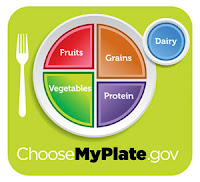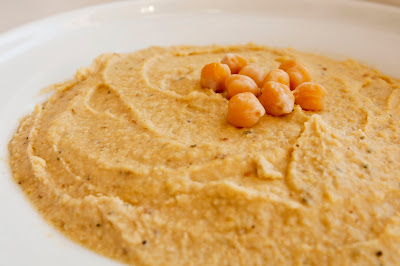Eat your fruits and
vegetables! The health benefits of a diet rich in fruits and vegetables
outweigh the risks of pesticide exposure. Use the Environment Working Group’s
Shopper's Guide to Pesticides to reduce your exposures as much as possible, but
eating conventionally-grown produce is far better than not eating fruits and
vegetables at all. The Shopper's Guide to Pesticide in Produce will help you
determine which fruits and vegetables have the most pesticide residues and are
the most important to buy organic. You can lower your pesticide intake
substantially by avoiding the 12 most contaminated produce. Download this pocket guide to keep with you when shopping www.ewg.org
2011’s Dirty Dozen:
1. Apple 1. Onions
2. Celery 2. Sweet Corn
3. Strawberries 3. Pineapples
4. Peaches
5. Spinach 5. Asparagus
6. Nectarines-imported 6. Sweet Peas
7. Grapes-imported 7. Mangoes
8. Sweet bell peppers 8. Eggplant
9. Potatoes 9. Cantaloupe – domestic
10. Blueberries -domestic
11. Lettuce
12. Kale/collards
13. Sweet Potatoes
14. Grapefruit
15. Mushrooms
Take action on the USDA Dietary
Guidelines by making changes in these three areas:
Balancing Calories
-
Enjoy your food, but eat less
-
Avoid oversized portions (deck
of cards is a good size)
Foods to Increase
-
Make half your plate fruits and
vegetables
-
Make at least half your grains
whole grains
-
Switch to fat-free or low-fat
(1%) milk
Foods to Reduce
-
Compare sodium in foods like
soup, bread, and frozen meals-and choose the foods with lower numbers
-
Drink water instead of sugary
drinks
Nutritional Tips: Link for more information www.choosemyplate.org
1. Choose MyPlate
2. Add more vegetables to your day
3. Focus on fruits
4. Make half your grains whole
5. Got your dairy today?
6. With protein foods, variety is key
7. Build a healthy meal
8. Healthy eating for vegetarians
9. Smart shopping for veggies and fruits
10. Liven up your meal with vegetables and fruits
11. Kid-friendly veggies and fruits
12. Be a healthy role model for children
13. Cut back on your kid’s sweet treats
14. Salt and sodium
Healthy Snacks Ideas:
Here are some very simple, high
flavor recipes for your “mini meals”.
With your Fingers:
Hard-boiled EGG: Place eggs in a saucepan and cover by 1 inch of cold water.
Bring to a boil then remove
from the heat and cover with a lid. Allow to sit for 10 minutes. Pour off the
hot water and run cold water over the eggs to cool. Peel the eggs and enjoy.
Sprinkle with some salt and some paprika or fresh lemon zest and pepper, or
some fresh chopped herbs to mix it up a bit.
CHEESE and crackers: Combine 1 ounce of cheddar with your favorite
preserves, I like peach or fig, on a whole grain cracker. Or eat along with
some dried fruits like apricots or cherries. Try cheese and pickles, sliced pear
or apple.
NUTS & SEEDS: Mix together 3 cups of whole nuts such as almonds,
walnuts, or cashews with a ¼ of each sunflower seeds, flax seeds, and pumpkin
seeds. Whisk together 2 egg whites, 2 tablespoons honey, 1 ½ teaspoons salt, ½
teaspoon each of cinnamon and cumin, and a small pinch of cayenne. Add this to the nut and seed mix and toss to
combine. Spread in an even layer on a sheet pan and bake in a 325°F oven for
about 30-35 minutes, stirring occasionally. Remove from the oven and allow to
cool slightly before scraping from the pan.
Cool completely before storing.
On Bread:
ALMOND: Spread 1 slice of whole grain bread with almond butter
and top with thinly sliced apple or pear and pasteurized goat cheese.
CUCUMBER: Spread 1 slice of toasted whole grain bread with
low-fat ricotta cheese. Sprinkle some fresh chopped herbs like dill or parsley,
salt and pepper, and fresh squeeze lemon juice on the cheese. Top with thinly
sliced cucumbers.
GREEK: Spread 1 slice of whole grain bread with Greek style yogurt. Drizzle
with some honey, sprinkle with cinnamon and sliced almonds or pistachios.
With a Fork:
CHICKEN: Serve 3 ounces of cooked chicken with some good
grainy or Dijon mustard and sliced apples (gala, or granny smith).
TUNA: Serve 2 ounces chunk light tuna with ¼ cup cooked white beans drizzled
with some olive oil, lemon juice, salt and pepper, and chopped parsley.
TOMATO: Chop or slice up about a cup of tomatoes and serve
with 1 ounce of pasteurized low-fat feta or fresh mozzarella. Dress with some good
olive oil, balsamic vinegar, salt and pepper, and chopped fresh parsley or
basil.
SWEET POTATO: Wash a sweet
potato and pierce all over with a fork. Place in a covered microwave safe dish
and add a little water. Microwave on high for about 6-8 minutes turning potato
over half way through the cooking time. Serve with a dollop of sour cream or
plain yogurt, a squeeze of lime juice and some cumin or smoked paprika. You can
also serve with a splash of soy sauce or just a sprinkle of cinnamon.
Dips:
YOGURT: Combine ¼ cup Greek style yogurt with salt, pepper, a
squeeze of lemon juice, and chopped fresh herbs like dill, cilantro, parsley,
and basil or a good pinch of dried Italian herbs and some lemon zest. Serve
with raw vegetables or whole grain crackers.
AVOCADO: Smash up 1 ripe avocado with some lime juice, and salt
and pepper. Stir in some fresh chopped cilantro and finely diced red onion.
Serve with fresh vegetables or baked tortilla chips.
CHICKPEA:
Hummus with
Harissa
Yield: Hummus:
about 1 1/2 cups, Harissa: about 1/4 cup
Hummus:
1, 14 ounce can of garbanzo
beans, drained
3 tablespoons fresh squeezed
lemon juice
2 tablespoons tahini
1 teaspoon garlic powder
1/4 teaspoon salt
1/3 cup olive oil
Harissa:
11/2 teaspoons coriander
seeds
1 teaspoon caraway seeds
1 teaspoon cumin seeds
3 cloves of garlic, coarsely
chopped
3 tablespoons smoked sweet
paprika
2 teaspoons red pepper flakes
2 tablespoons olive oil
Salt
Pita points and olive oil for
serving
For the hummus: In the bowl of a food processor
combine garbanzo beans, lemon juice, tahini, garlic powder and salt. Process until combined. With the processor running, slowly drizzle in
the oil. If you prefer a thinner
consistency add water until the desired consistency is achieved.
For the harissa: Combine the coriander, caraway and
cumin seeds in a small skillet and toast over medium heat for 2-3 minutes until
you begin to smell the seeds and they start to crackle. Remove from the heat
and allow to cool. Grind to a fine powder using a spice grinder. Move to a
blender and add the garlic, paprika, red pepper flakes and olive oil. Blend until it becomes a smooth paste and
salt to taste. Transfer to a glass jar and cover with a layer of olive oil. Store,
tightly sealed, in the refrigerator for up to a month.
For the pita: Cut pita into triangles and brush with
olive oil. Toast in a 350°F oven for
20-25 minutes on a sheet pan with a rack.
To serve: Place hummus in a shallow bowl and drizzle
with oil and small amount of harissa, serve remaining harissa on side.














